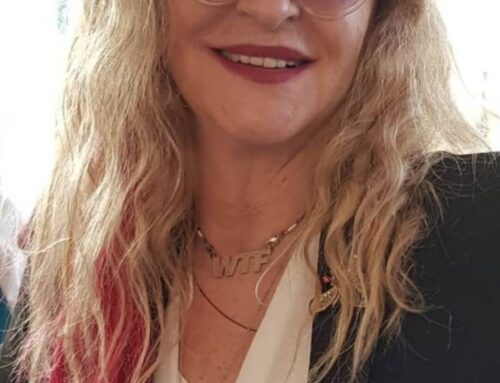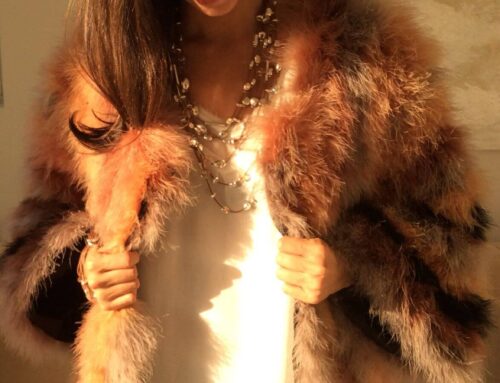IS SUSTAINABLE: FEASIBLE OR FASHIONABLE
It was late April, early Spring when I found myself having lunch high above Sunset Boulevard, at members only club, Soho House, with a well-known actress, and joined by a newly minted Oscar Winner, in her directorial debut for “My Octopus Teacher”. Both loved the ocean, the outdoors and hiking and were deeply invested in conservation and sustainability, kindred spirits, I felt, the purpose of my introduction. We sat, on top of the world, with the roof rolled back, tables socially distanced, masks set aside, some still worn as an accessory, dangling from one ear or one’s ear, perhaps in anticipation of a bathroom run, with masks still required. People were being vaccinated, hope hung heavily in the air and yet the pandemic still dominated the conversation, as did the topic of extra Covid LBS. First World problems, in light of a year, the likes of which, none of us had ever experienced. We extolled the virtues of elastic waist bands and the ease of daily dressing in sweats, all the while fooling ourselves that we were preparing for an online workout session, but in reality, side tracked by Tik Tok, or IG. “If, during lockdown, opening and closing of a fridge door constituted a weight workout, we would have given model Giselle, a run for her money. We discussed zoom meetings, occasionally wearing a glamorous shirt atop a pair of sweats, after all the world was only seeing our better half, or so we felt. We weren’t talking of a life partner as a better half, as 3 of us had single handily survived lockdown and secretly relished the lack of need to adhere to the socially expected norms and courtesy of cohabitation and ablution. In February 2020 I had packed, in anticipation of a 10-day return business trip to LA and had for once, shut my case with ease, eliminated the “what if’s and just in case” items and for once, travelled light. However, “Man plans God laughs”. March 14th the world shut down, my life and wardrobe, to this day, left hanging in my London rental, with retrieval, 5 Covid tests and 8 quarantine days away. So, to my friends, I posed the question, To Shop or Not to Shop? In unison, came their response “Consume less Conserve more”! A battle cry uttered by many new up and coming labels in the Fashion Industry. A charge led by Gen Z’s with a smattering of Millennial’s. I wondered, could the fact that one friend spent many hours under water in the kelp forests of South Africa and the other on a movie set, dressed by wardrobe department, have had any bearing on their lack of need for a more extensive closet filled with clothes. Both were educated, informed and leaned into the world of conservation and sustainability. They voiced their concern about the large amount of clothing that ended up in landfills, their decisions based on environmental responsibility and not on a lack of need for an extensive closest of disposable clothing. An astounding 85% of fast affordable fashion now ended up in landfills due to fact that they are cheaply made and easily discarded, though not so easily disposed of. Many in the industry were now moving towards sustainable fashion, constructed of recyclable materials, creating a longer life cycle for the item and giving the designer the opportunity to re-envision the garment into another product for future use and sale. Even leading trade shows were now asking designers as to what percentage of their collections were sustainable. Just saying one’s packaging, made from recyclable materials was sustainable was no longer enough. Brands were joining Pack4Good and looking for alternatives in their effort to combat climate change by eliminating forest fibers, utilized in boxes and paper goods used in the shipping process. “Nature-based solutions are a huge part of combating climate change.” It now needed to permeate every aspect of the industry. It needed to meet the demands of today but at the same time in no way jeopardize the industry of tomorrow and its ability to meet the needs and future of a younger generation. It demanded better working conditions for workers, a change in addressing the carbon footprint of shipping and focusing on the needs of the consumer, and most importantly, questioned how and where raw materials were now being sourced. It was holding the garment industry’s feet to the fire stating,” if you can’t stand the heat get out of the kitchen”. If the world was going to survive and the ocean beds thrive, we needed to be the puppet masters that pulled the strings that orchestrated the change.
I, being in the Fashion business, saw the world through the eyes of a consumer and under the directive of a fiscally responsible, bottom line motivated accountant. How, I asked could a business survive on the model of sustainability which lived by the philosophy less is less or more than enough. A business model, promoted by the very industry that had just recently pursued a world of fast affordable disposable fashion and overnight deliveries. An Industry that had contributed to 20% of the global industrial water pollution and had caused rivers in Africa to run blue with the stain of chemicals from garment production
Clothing production in response, to an ever-growing population and increased demand for fast fashion, had doubled in last 2 decades and now produced close to a billion units worldwide. Houston, we had and have a problem! In the fashion world, being ethical, tended to go hand in hand, with lack of growth and profitability and until all consumers were on the same page, many brands were reluctant to change the business model to one of sustainability.
How would it work, I queried, in a socially driven media world, where daily posts and egotistical likes were driving business and brand recognition, contributing to a growth in demand, visibility and profitability? How, did a business survive on a directive of less consumer purchasing in return for longevity of wear? Did quality over quantity measure up and resonate or was it most viable only to an established brand with international distribution and a far reach where loyalty and sales were already built into the company’s mission statement and bottom line. Gen Z tended more to individuality often swayed by a group that they felt most suited their thinking, social conscious and alignment to a cause. Sustainability, race, religion and gender equality often being forefront in their decisions in choice of purchases and influencer followings. In contrast Millennial’s tended towards brand loyalty and familiar labels, more often than not supporting designers and brands that had been around for years. Could these well-established brands, produced in far flung countries, operating as a well-oiled machine, now pivot to a model of sustainability without the loss of momentum, revenue and customer loyalty. It was far easier for a startup, often visualized and created by Gen Z to set on the path to sustainability rather than a large machine to be able to pivot, change gears and reposition the thinking of a company many years in business. The Gen Z age group seemed to focus more on long-term value and smart investments so it stood to reason that the push for sustainability would be coming from this demographic where an “after-life” of a garment was tantamount to a purchase decision. Gen Z’s were now being seen to be attracted to purchases that maximized the value of every dollar, the longevity of the garment life and the material from which it was it constructed. Gone were the days of consuming all things magic when it came to fungi, it had been repurposed and we were now seeing a generation not eating their words but rather utilizing this natural resource, mushrooms, as a way to make “leather” and appealing to the Vegan market. Forever changing my view on mushrooms. Millennials, in contrast, had grown up in a time of financial growth and a booming stock market, were more interested in the entire experience of buying a product and the service provided during the selection process, under which it was purchased. For many Millennials, an item that outlasted the impulse or trend, did not carry the same conscious mindset and necessity for recyclable clothing
The Pandemic had now added another layer of complexity to the sustainability issue. “Roads were the arteries though which the economy pulsed” and ours where crumbling fast. Demand for online shopping and overnight shipping had now necessitated Amazon to add more vehicles to the fleet, power up new electric vehicles, construct and seal more boxes, put more drivers and vans on the road and air in product in order to meet ever growing demands, More delivery vehicles on the road now contributed to slower traffic, greater gas emissions, raised costs to a commuting nation and contributed to fraying nerves of a nation, already pushed to breaking point, from a year under lockdown. Growth of the economy was dependent on the mobility of its citizens and it was apparent that our roads and bridges were failing us. This First World Country had fast become a nation heading towards 3rd world infrastructure and ranking us, The US 13th in the world standings. We were again contributing to a carbon footprint that had once had a downward trajectory and instead created a carbon copy of a footprint partially undone. Had President Biden been peaking over my shoulder, reading my blog, and responding by pushing for a Trillion-dollar Bipartisan Infrastructure Bill. A Bill, in which some felt, did not go far enough in addressing climate change, but had satisfied enough to get the votes necessary to fund and move forward.
As the lunch check hit the table, I was brought back to reality, but not quite down to earth, as we were still after all, dining 13 floors above Sunset Boulevard. It seemed, that my informative narrative had sucked the air out of the conversation, and I found myself grateful for the olive trees, deeply rooted and spread throughout the garden and for the oxygen they emitted. As we stood to leave, I once again, to my guests posed the rhetorical question
IS SUSTAINABLE: FEASIBLE OR FASHIONABLE




Excellent article and really well
written Gill!
These are concerns I have been having for a long while. The accessibility to cheap fashion, driven in a small part by social media, coupled by too many other factors to go into here, has lead to disposable fashion.
I have said for years, on seeing sale clothes etc hanging limply on racks, “another o/seas landfill”
The truth is we sold out to cheap and often exploited labour all over the developing world, denying local jobs.
Glad to see people are loving your blog
Hey Gillian,
Brilliantly written !!! Bravo. I agree completely. We
should grab an ice tea together. go for an ice tea. So sorry to hear that your clothes and probably some of your “best” pieces are trapped in London. So, less is more. Now we believe it. We’re alive! Anyway, your writing is smooth. I’m impressed. You have a great talent. XOLisa
Well written!! There is legislation in the EU and similar being discussed in US to create more jobs and opportunities for this sector. Hoping they will be adopted if all the representatives and senators support and show up to vote for it to expand Pres Biden’s bill. EPR is key.(.extended producer responsibility ) to embrace a circular business model which should be a win win ,feasible and fashionable!